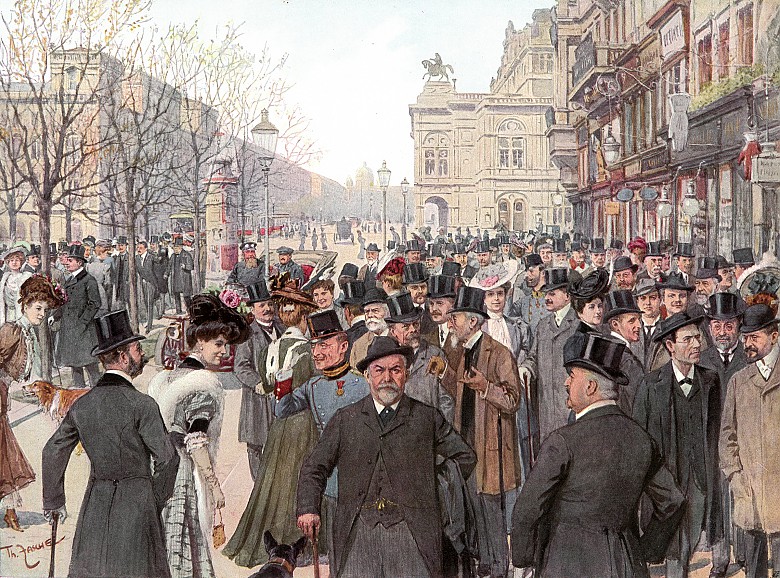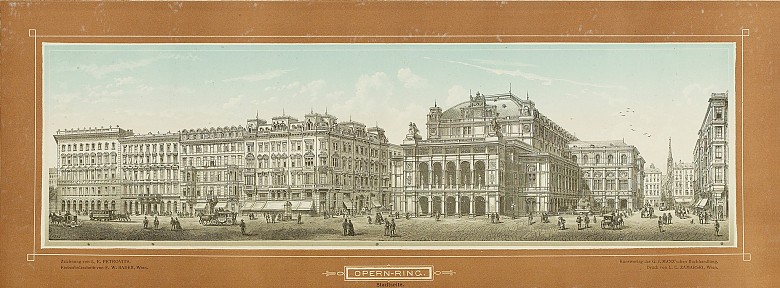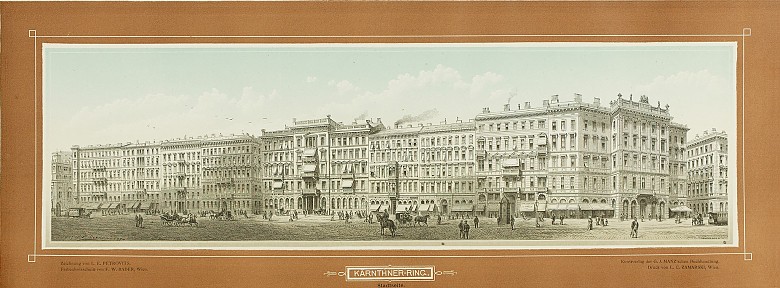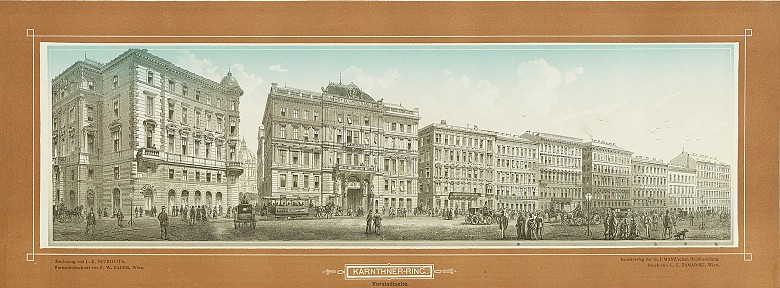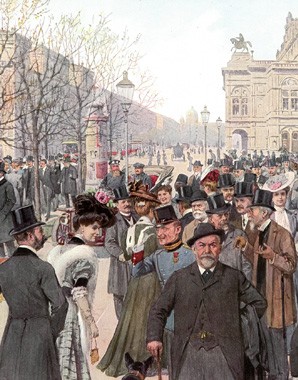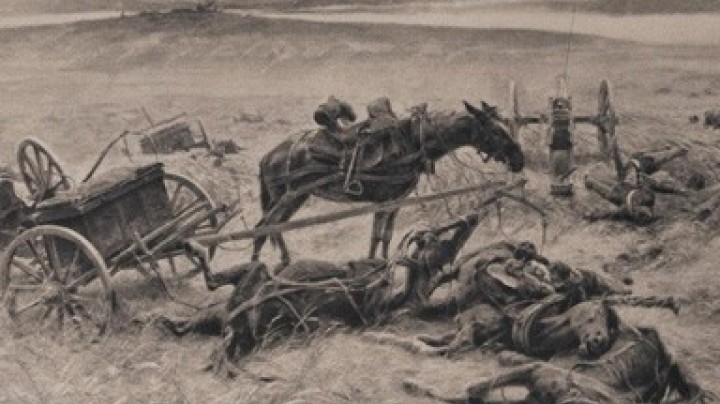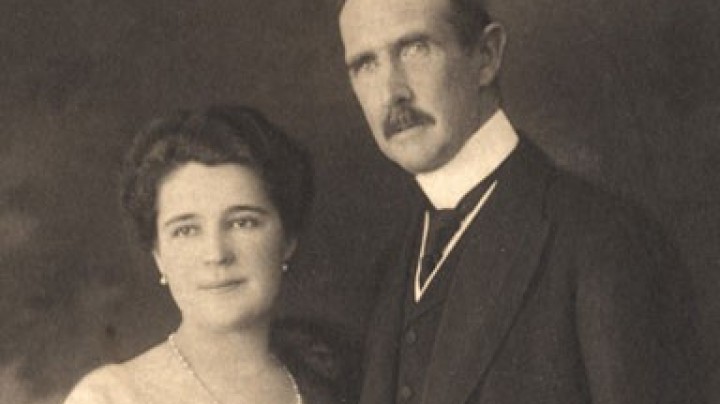The Corso of the Viennese bourgeoisie
Even from the initial stages of its construction, the Ringstrasse became the favourite promenade for the middle classes to stroll, a place to ‘look and be looked at’.
Ludwig Hevesi, art critic, c. 1892They are certainly very beautiful, those ten lengths of the path on the Kärntner Ring. Especially in spring, in the hour before the opera, when a hazy golden sky lies to the west above the domes of the Court Museums, the gilding of the Heinrichhof lapping the long façade like living fire, when purple Bengal flames shoot from the rows of windows opposite the Imperial Gardens and the little Pegasus on the crown of the Opera House looks distinctly as if he is about to soar up into the Olympian effulgence. That is the aristocratic hour of the ‘Kärntnerring’.
The tradition of strolling on the city walls was continued on the Ringstrasse that replaced them. The most popular stretch of the boulevard was from the ‘Sirk Corner’ (after the café of the same name) by the Opera to Schwarzenbergplatz.
It is claimed that the inner city side of the Ring was ten times more frequented than the suburban side. A contemporary description conveys an impression of the scene:
It resembles a stealthy conspiracy in the dark, when on the short stretch between Kärntnertor and Schwarzenbergplatz, albeit only on the city side, every evening an ominous mêlée takes place, an urban throng that treads on its own feet and surges up and down arm in arm with itself. … Whole processions of two-legged beavers and sable squeeze past each other. At the familiar street corner where everybody about-turns on command, gather these groups of the knights of chic, the monocle nobility, the trouser-crease-ocracy …
The Ringstrasse offered everyone the opportunity of rubbing shoulders with the rich and beautiful, if only for the space of a walk or a visit to the coffee house. Here one was in close proximity to those in power, once could walk past the palace gardens and perhaps even watch a procession.
